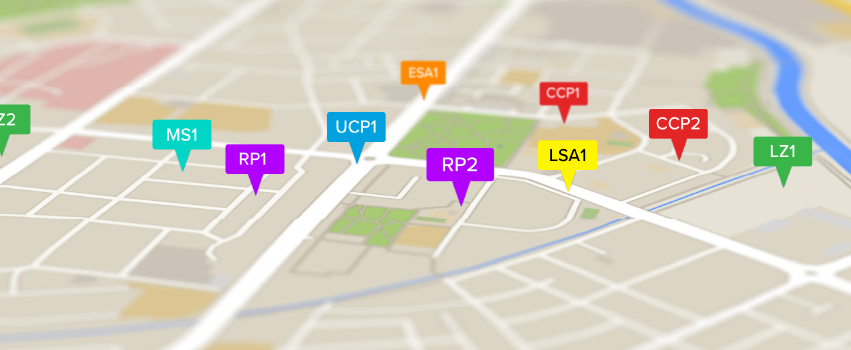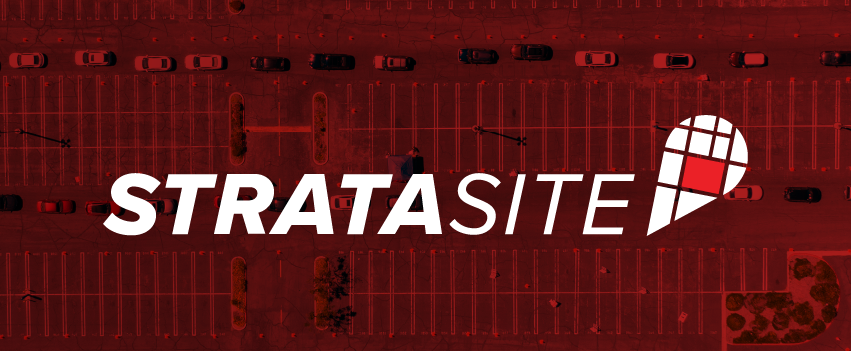Preparing Municipalities for a Pandemic
When COVID-19 hit, many municipalities were given conflicting guidance on proper response and found it difficult to adapt to the rapidly changing protocols and safety recommendations—causing inefficiencies in addressing community spread and vaccination distribution.
Unfortunately, what is occurring with COVID-19 will probably not be an isolated incident. A new virus can emerge at any time and quickly spread on a global basis. Since 1918, the world has experienced seven notable epidemics—including COVID-19—which have all had a serious impact on the human population.
It’s important to recognize that when a global spread occurs, a vaccine, testing or treatment may not immediately exist. Because of this potential delay in access to critical resources, it’s crucial to be prepared with a thorough pandemic preparedness plan.
Community preparedness is the ability of communities to prepare for, withstand and recover from public health incidents in both the short and long term.
– Centers for Disease Control and Prevention
Pandemic preparation is a multi-faceted emergency response planning need. How a municipality prepares for a pandemic can vary drastically from the preparedness needed for other emergency situations, though, including natural disasters.
The Pan American Health Organization (PAHO) identifies that a pandemic is different from a quick onset disaster because:
- The shock lasts six to twelve weeks versus a short duration.
- It takes place worldwide instead of a specific area.
- Help may not be available from neighboring countries or aid agencies.
- It involves a contagious disease, not a natural or manmade disaster.
- People should not seek public shelter because of risk of spread, so municipalities may not be able to provide emergency public shelter.
While most countries have developed national pandemic preparedness plans, a minimal number of municipalities have specific plans. Municipalities should focus on building updated, thorough protocols to help mitigate the local economic and health risks associated with a pandemic.
Knowing who will do what, when and with what resources is critical to managing a pandemic situation. Successful operations occur when actors know their roles and responsibilities, understand how they fit into the overall plan and how to work together—and have the capacities and resources to implement the plan.–The World Health Organization
Due to the unpredictability and complexity of virus situations, there are a number of considerations that are crucial to building a strong pandemic preparedness plan—and the most pressing currently is how to successfully distribute vaccines.
Managing Effective Vaccine Distribution
Vaccines are an integral part of slowing pandemics, and the accurate and efficient distribution of an approved vaccine is key for helping rapidly address pandemic situations. Municipalities are currently navigating how to address vaccine distribution—and the most efficient ways to properly immunize community members.
The Cybersecurity and Infrastructure Security Agency (CISA) acknowledges that the stages of distribution that need to be evaluated include:
- Manufacturing sites
- Transporters
- Clinics, pharmacies and healthcare facilities
- Points of distribution
It’s specifically important that any organizations that are supporting vaccine distribution carefully address potential cybersecurity issues. CISA recommends that organizations involved in the vaccine distribution process audit and assess security vulnerabilities to help reduce the risk of disruption in vaccine distribution.
Potential threats could include:
- Anti-vaccination protestors
- Insiders
- Criminals or organized crime
- Terrorists
By conducting a full risk assessment and determining mitigation techniques, there will be a decreased risk of distribution disruption.
For a full outline of recommended practices for community vaccination distribution, the Federal Emergency Management Agency developed its Community Vaccination Centers Playbook. This provides comprehensive guidance on community planning and distribution of vaccines.
Completing a comprehensive security audit of all stages of distribution will help mitigate risk and ensure greater efficiencies in distribution.
Beyond vaccine distribution, though, municipalities need to ensure they learn from the COVID-19 pandemic and are prepared for what could come next. That’s why documenting a comprehensive pandemic preparedness plan is crucial.
Strategizing a Pandemic Preparedness Plan
Preparing for a pandemic situation is a distinct planning need for municipalities. Adequate pre-planning is essential for an effective response, including resource allocation and identification of roles and responsibilities.
…National Influenza Preparedness Plans are only as effective as their local contingency plans.
–Institute of Medicine (US) Forum on Microbial Threats
Take the below into consideration as you create or update your preparedness plan.
Create an Emergency Operations Center
Determining your municipality’s emergency operations center (EOC) is a priority first step when building out a plan.
The World Health Organization (WHO) defines an EOC as a “physical location or virtual space in which designated public health emergency management personnel assemble to coordinate operational information and resources for strategic management of public health events and emergencies.”
When planning your EOC, it’s important to take into consideration how your workspaces will be set up to address pandemic-specific protocols, including social distancing. In some areas, there may be multiple EOCs operating in tandem, making it crucial to identify how information will be shared. Be sure to properly document information flow processes, as well as clarity of roles and responsibilities for who will be in leadership positions during a response.
By developing a strategized EOC, municipalities and relevant stakeholders will be better equipped to quickly address public health emergencies—including pandemics—and offer prompt resource allocation.
Formulate a Multisector Team
A successful response is built on the development of a multisector emergency response team, which should include executive leadership (the mayor or someone appointed by the mayor) and pre-existing disaster committee members, as well as representatives from the following sectors:
- Public safety and security
- Public health and medical services
- Public works
- Food security
- Business and commerce
- Finance
- Logistics and transportation
- Communications spokesperson
- Telecommunications and information technology
When building your team, ensure that you document roles and responsibilities so that each individual understands which function he or she will perform during the emergency response. You’ll also want to take into consideration potential Health Insurance Portability and Accountability Act (HIPAA) restrictions, as this will concretely identify who can handle certain roles, like registration or asking patient questions. Aligning with HIPAA can add another layer of complexity to your response, so it’s crucial to understand that as you build your multisector team.
By organizing a multisector planning team, municipalities can be prepared to address all facets of a pandemic response.
Determine Local Characteristics
Each municipality is unique in its setup and needs, so you need to develop a plan based on your area’s characteristics.
The Management Sciences for Health identifies select characteristics to focus on, including:
- Population, including age groups and demographics
- Physical environment, including climate, water and housing
- Health, including public and private health units
- Education, including the availability of schools and teaching personnel
- Basic services, including housing, water and sanitation
- Critical infrastructure, including electricity, transportation and food security
Understanding your municipality’s specific infrastructure will create a customized plan that accurately addresses issues during your response.
Assess Available Resources
Assessing healthcare resources is imperative for understanding where gaps may occur during a pandemic response. Municipalities should work in tandem with healthcare organizations to identify all available resources, then map potential gaps.
These resources can include:
- Masks
- Gloves
- Soap
- Alcohol gel
- IV fluids and set-ups
- Food for patients
- Oxygen
- Antibiotics
Municipalities should also make considerations around items that may be considered standard—but have proven to be hard-to-find commodities during the COVID-19 pandemic. These can include garbage bags, bandages, sharps containers and even blue tape. By auditing traditional healthcare resources needs and learning from the current pandemic situation, municipalities can be better prepared for the next public health emergency.
In addition to assessing healthcare-specific resources, municipalities should have an understanding of potential food scarcity issues that may arise in the area and then determine how those can be addressed in an emergency situation—including which locations can be used for distribution. Local leaders need to prioritize providing sufficient food for their communities, and adequate response often relies on early planning.
You should also evaluate and understand overall human resource needs for a pandemic response, including identifying potential gaps between planning and response for the current pandemic situation. Document who has been needed most during the current situation—and asses which individuals will be needed for coordinating a new pandemic response.
Identify Healthcare Staffing Gaps
During a pandemic situation, strain will be placed on healthcare organizations. Therefore, it’s crucial to identify potential gaps and work in tandem with healthcare organizations to determine ways to address these gaps during an emergency situation.
The WHO recommends developing staffing plans that will help “estimate additional staffing needs and determine roles that can be supported by surge staff or volunteers.” This includes setting protocols and training requirements for properly recruiting and educating the necessary surge staff, as well as developing procedures to screen and train volunteers. You’ll also need to set up protocols for volunteer coordination, as that can be a full-time job that will need backup plans in place to address volunteer shortages that may result in additional challenges.
Additionally, municipalities should work with healthcare organizations to build programs to maintain staff during emergency situations, as well as provide the necessary support for ongoing retention, including stress management and health monitoring. This will help to limit a decline in available staffing throughout pandemic management.
Address Outside Support Protocols
During a pandemic situation, additional support may be needed, especially with resource allocation and vaccine distribution. You need to identify the procedures for requesting outside support, including the National Guard, as well as procedures for mobilizing first responders. Work with relevant stakeholders to define criteria for this need, as well as points of contact for mobilization and who is responsible for coordination with applicable emergency responders.
Your plan should also document the ways to maintain responder health, which supports the protection of public health and other emergency responders. Concretely define protocols for arrival and potential short-term stays, including locations for stationing and food and water supplies. You’ll also want to take into consideration limitations for the number of hours an individual can work per week, as well as potential burnout that breaks can help mitigate. Establishing those boundaries early on will help support sustained engagement and success from responders.
By determining criteria for requesting outside support and being prepared to properly direct their response, your municipality will be able to most effectively utilize these resources.
Promote Plan Training
A plan is only effective if it is well understood and trained on. Consider conducting a simulation exercise to evaluate the plan, then address gaps and areas of revision. This will help your preparedness team identify plan updates that will make it as effective as possible during actual execution.
Investing in a learning management system can help provide real-time, online training for all relevant stakeholders, helping ensure comprehensive preparedness to execute the emergency plan, as needed.
Include an accountability aspect in training, as well. All stakeholders involved in the development and execution of the pandemic preparedness plan need to know what the plan consists of and what their specific responsibilities are. This can be as simple as quizzes through email that people must complete. It’s not about pass or fail; rather, you just want to set a process that ensures people are going into the plan and reviewing it.
By integrating the above considerations into an overarching pandemic preparedness plan, municipalities will be better equipped to assess and address global pandemic situations.
Planning for Recovery
Following a pandemic situation, municipalities need to be prepared for how recovery will take shape—and how to maintain economic strength, citizen health and overarching confidence in local leadership.
The three key functions for community recovery are:
- Social and economic community impact assessment
- Short-term relief activities
- Long-term recovery and resilience building
By having protocols in place to address the above and identifying leadership for each function, municipalities can be better prepared to experience a strong road to recovery.
Municipal leaders should also develop relationships with the media and set communications standards. Forming these relationships will help municipalities through the recovery stage of an emergency by limiting the spread of misinformation and identifying the most important messages for citizens.
Municipalities need to develop updated and thorough contingency plans in between emergency situations to be prepared for what may occur next.
Local leaders need to continue the conversation about what they can do to help their community recover from the pandemic—and what can be done to prepare for the next emergency. Continuing ongoing review and plan adaption per the aforementioned considerations is imperative.
Simplifying a Coordinated Pandemic Response
Ensure a coordinated response to the here-and-now of a public health crisis—all while knowing you have the ability to quickly update and distribute your plan if the situation evolves.
StrataSite™ is the new standard for collaborative pandemic management that enables a coordinated response focused on:
- Healthcare facilities
- Medical staging areas
- Testing sites
- Emergency operations centers
- Mobile morgues
- Traffic control
- Perimeters
With StrataSite, you’ll be able to quickly collaborate, establish and distribute key logistical details necessary for the successful deployment of a comprehensive pandemic management plan.
“Pandemic planning is very dynamic and everchanging—the StrataSite pandemic management plan allows our municipalities and private sectors to plan together.”
–City Safety Director
Sign up for your free, no-obligation trial of StrataSite today.




